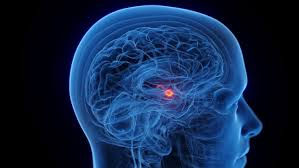Understanding Yourself or Your Loved One: 10 Biological Facts about Eating Disorders
- support528742
- May 20, 2024
- 2 min read
1. Anorexia nervosa (AN) is dangerous and deadly.
Every 52 minutes someone dies from an eating disorder.
2. Anorexia nervosa is heritable.
Studies, including twin studies and family studies, have shown that anorexia nervosa tends to run in families.
3. Anorexia nervosa is not a choice, it is a biological and brain-based illness
Brain misfiring cause eating disorders, while there are environmental and psychosocial aspects of the disease, it is predominantly a biological illness.
While a disease like diabetes is a poor functioning pancreas, an eating disorder is a misfiring brain. The difference is that we do not have a medicine like insulin to help cure treat eating disorders. We must manually retrain the brain instead.
4. Anorexia nervosa involves altered brain circuits that contribute to difficulty sensing reward and interpreting body signals to inform decisions.
Individuals with AN have altered brain activity in regions associated with reward, such as the ventral striatum and the orbitofrontal cortex.
These brain regions are involved in the processing of pleasure and reward from activities like eating. People with AN do not experience the same pleasure or positive reinforcement from eating that others do.
5. Anoxeria nervosa shares genes and neurodevelopment process with other psychiatric illness, such as OCD and anxiety disorders.
Perfectionism, rigidity, anxiety, genetic factors, dysregulation of serotonin and dopamine, etc. all contribute to mental illness. The result of these abnormalities may not be isolated to an eating disorder, and more typically extend to additional diagnosis.
6. Temperamental traits increase one’s vulnerability to and contribute to the maintenance of Anorexia nervosa.
There are 57 commonly identified traits among people with eating disorders. These traits are genetically encoded into a person’s genome and cannot be turned on or off. However, we can shift traits from being destructive to productive.
This means the same traits that are currently fostering eating disorder symptoms can be shifted to positively aid in recovery.
7. The environment supersedes the genetic influence of trait expressions during childhood while genes supersede environmental influences after puberty.
Depending on the age of a patient, the root of an eating disorder may vary, but using informed biological research, we can pinpoint the most likely factors that will aid in recovery.
8. Genes trigger an increased risk for lower percentage of body fat,, fat-free mass, and body mass index and increased physical activity among males and females with Anorexia nervosa.
Everyone is susceptible to an eating disorder. Eating disorders are triggered when a certain point of malnutrition is reached.
The point at which an eating disorder will be triggered varies from person to person, so some people are more likely to develop anorexia nervosa than others.
9. Faculty interception in persons with Anorexia nervosa may contribute to body dissatisfaction.
Introspection is one’s ability to sense internal body signal and interpret them into behaviors and emotions. The insula controls a large part of this function.
Individuals with AN often have impaired insula functioning, which negatively impacts their ability to sense hunger, satiation, and body satisfaction.
10. Persons with Anorexia nervosa tend to process information in detail and see errors over success.
A common trend among individuals with AN is focusing on small details rather than the big picture. This can be productive or destructive.
Treatment helps to manage responses to tasks, rewards, punishments, etc. by offering consistency and mutually agreed limits.



Comments